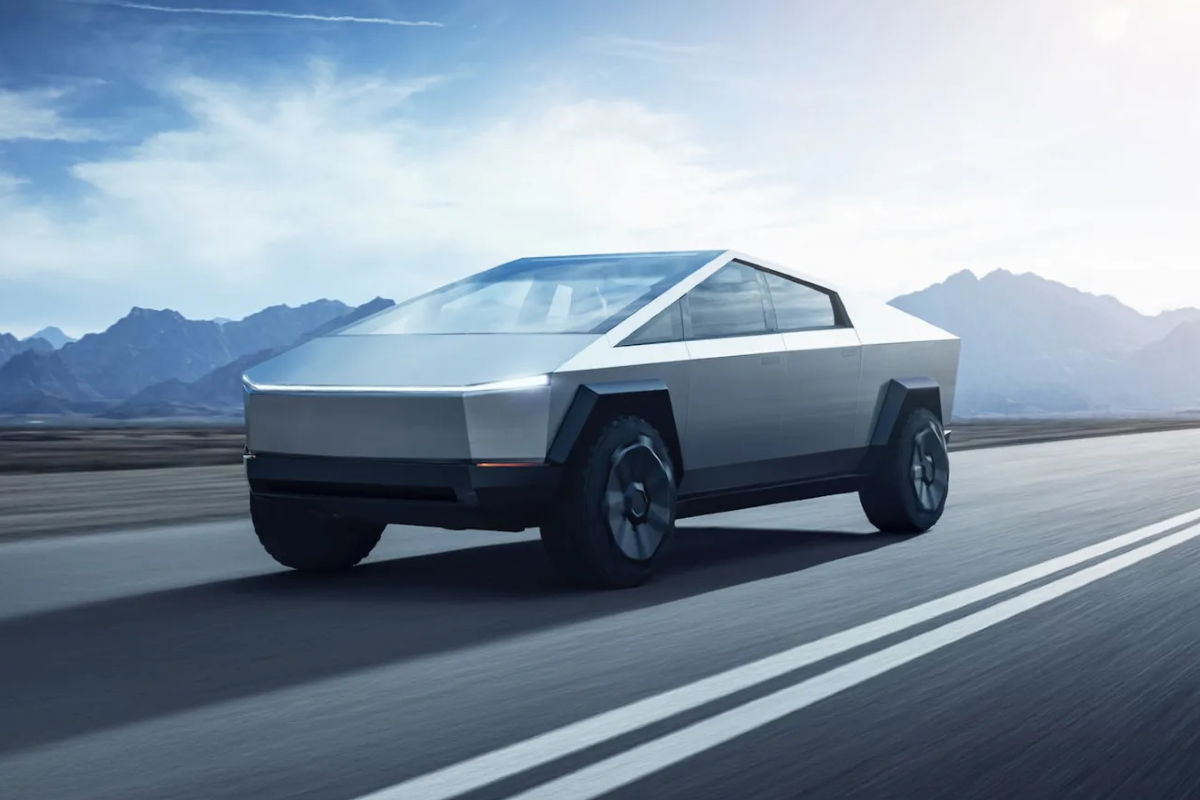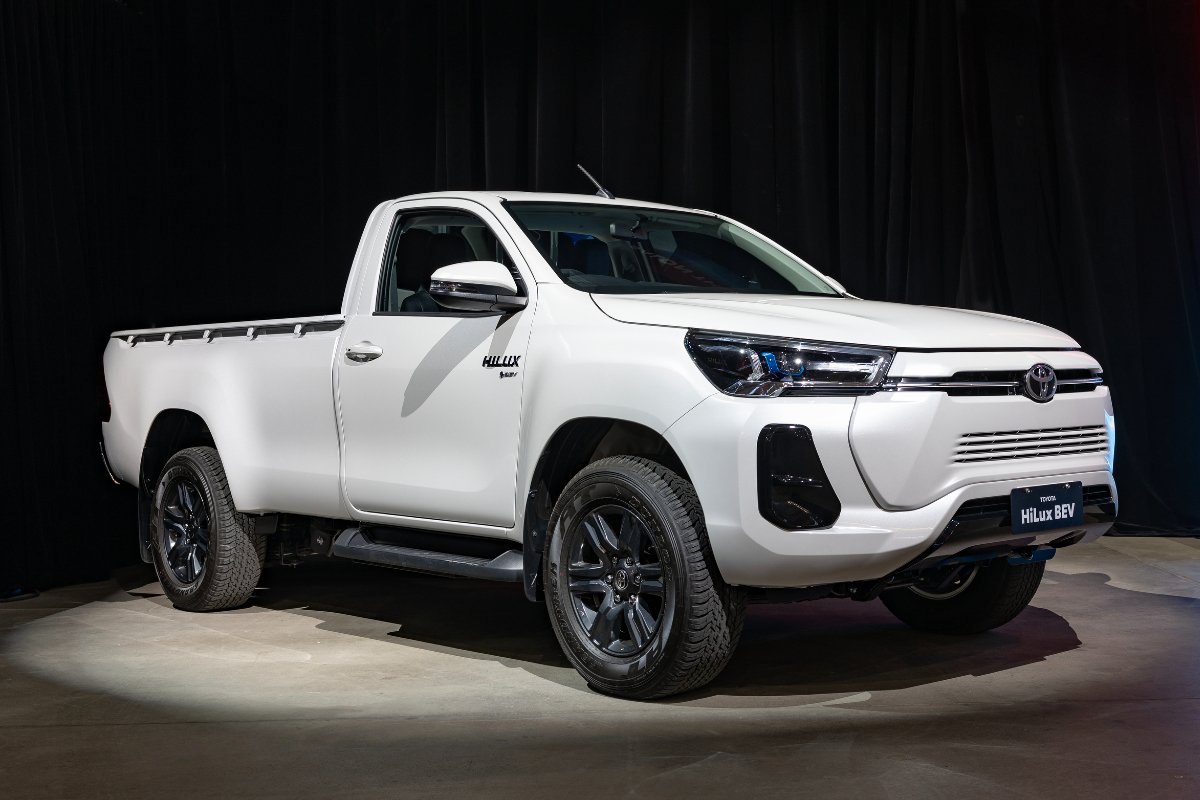
It’s not often that a week goes by without some story on the web about another potential electric ute coming to Australia. So far, we have the laughably expensive LDV eT60 on sale here and that’s about it. But a number of other manufacturers are, apparently, eyeing up the market with a view to offering electric products.
But will Australians by electric utes? Do they represent a practical alternative to internal combustion engined products for consumers?
Firstly, let’s dispel the myth that the Tesla Cybertruck is coming to Australia. Whilst there’s clearly a considerable market for right-hand drive (RHD) versions of the Tesla Model 3 and the Y around the world, there’s so little RHD demand for the Model S and X that they’ve been dropped.
The only potential RHD market for the Cybertruck would be Australia and, given it’s size is very close to a Ford F-150, the market would maybe reach a couple of thousand a year at best. I really don’t see Tesla bothering with RHD production.
READ MORE: 2023 Ford F-150 new car review
Apart from a handful in New Zealand and South Africa, there is no other market anywhere for RHD full size pickups, regardless of power unit. As regards the other American products in this sector, I don’t see Rivian showing any lasting interest in making RHD vehicles for the same reasons.

That leaves the Big Three with their electric offerings. Whilst Ram, Ford and Chevrolet all offer converted RHD versions of their internal combustion powered full-size pickups here, with great success to date in the case of the Ram and Chevy, none of them have actually confirmed if and when they’ll offer electric trucks here. And Ford, with the F-150 Lightning, is already finding that the purchasing proposition for an electric ute is nowhere near as compelling at the moment in their home market as they’d hoped, with vehicles stacked up in dealer lots and large discounts available, despite very modest production numbers to date.
COMING SOON: Ram’s electric Toyota HiLux rival
The compromises that are required in terms of range vs useability and towing capacity are simply limiting the market for the electric alternative in the US. In my view, this would also be the case here, maybe even to a greater extent, given the importance that the average buyer places on towing and overall load capacities in Australia.
Don’t misunderstand me, both the Cybertruck and the Rivian will sell in appreciable numbers in the US, subject to supply constraints, because they’ll appeal to the ‘making a statement’ buyer who has multiple vehicles and also probably isn’t looking for as rugged a truck as the average Yellowstone cowboy.
But here in Australia, the whole full-size segment is a niche one where much of the reasoning for buying what is a very large vehicle in this market is for towing capacity and that overall payload. Throw in managing range issues once away from urban conurbations and the full size ute electric market pretty much disappears for the foreseeable future.
READ MORE: Ford F-150 Lightning review
Oh, and don’t ask about cold weather performance!
Do the sums. Start off with an electric F-150 Lightning and a theoretical 500km range, less 250km as you’re towing a 3000 kg race car trailer, then less 30 per cent as it’s five-degrees celsius today and you won’t get from Melbourne to Winton Raceway, let alone home again.

So, what of the main ute sector where the big numbers are sold in this market? The Ford Ranger, Toyota HiLux, Volkswagen Amarok, etc segment? Well, that’s where the LDV eT60 sits as the only OEM electric offering at the moment. And, truth be told, not only is the vehicle itself nothing to write home about at any level, it also retails for an astonishing $93,000. That’s double the price of an internal combustion powered LDV ute.
As of the end of September, an unimpressive 64 units of the eT60 had been registered here in 2023. Meanwhile, 6,700 of the ICE powered T60s were moved in the same period. I wonder how many demonstrators were amongst those 64 registrations…
There is the potential for both mining companies and also other businesses looking to reduce their carbon footprints to buy a realistically priced standard size ute. But such a ute will need to be an awful lot better, and an awful lot cheaper, than the eT60 to even sell in any numbers to that specialised part of the market.
I don’t believe that there’s a chance of seeing any real quantities of full electric utes being sold until one of the major Japanese or Korean manufacturers offers something far more compelling, and there’s simply not even a twinkle of that at the moment.
However, what I do see is a hybrid market developing as quickly as manufacturers can get product to market. I’m talking plug-in hybrids with a decent all electric range of 50km or so. With the seemingly ever increasing price of fuel, there’s massive opportunity for someone to come here with the right product at the right price.
And yet, Toyota are talking about a non-plug in hybrid version of the HiLux for 2024 but with really not much more that an outsize starter motor with the potential for a 10 per cent fuel saving. So what? Missed opportunity.
Meanwhile, Ford have announced that they’ll bring a plug-in hybrid version of the Ranger (with 45-50 km electric range) here in 2025. But it has a petrol engine! This segment is dominated by diesels for good reason. They’re hugely more economical in real time everyday driving, and normally more durable. Literally, 90 per cent of the utes sold here have diesel engines.

So, instead of grasping the opportunity to lead the way with a decent PHEV diesel 4×4, Ford will miss the mark I’m afraid. And Toyota too.
In this country, with the expectations of the average Australian ute buyer, I simply don’t see a mainstream market for an electric ute (apart from the mining sector) in the foreseeable future. But I do see a ready-made market for a great, well-priced, diesel ute with plug-in hybrid capability and a 50km range. That’s enough range for plenty of local driving purely on, say, a 15kw battery, that could not only be very easily and cheaply charged up overnight at home using a 10amp socket, but also could be a great power source on site for tools etc during a working day or away in the bush.
READ MORE: 2025 Ford Ranger hybrid revealed
The 2025 Ranger is almost that vehicle… except for the petrol engine! Madness.
Maybe Kia will be the ones to get it right. They’ve made no secret recently of their upcoming move into the ute market in Australia. They also know how to make diesel engines and they’ve shown, between themselves and their Hyundai cousins, that they’re more than willing to adopt whichever technology is appropriate to a given market, be that ICE, PHEV or full EV.
In these times of huge transition as automotive technology develops at the fastest rate for a hundred years, more and more product planning mistakes are being made. But it’s also a time of opportunity for the ones who get it right.
In this part of the market, my money is on the Koreans.











Discussion about this post